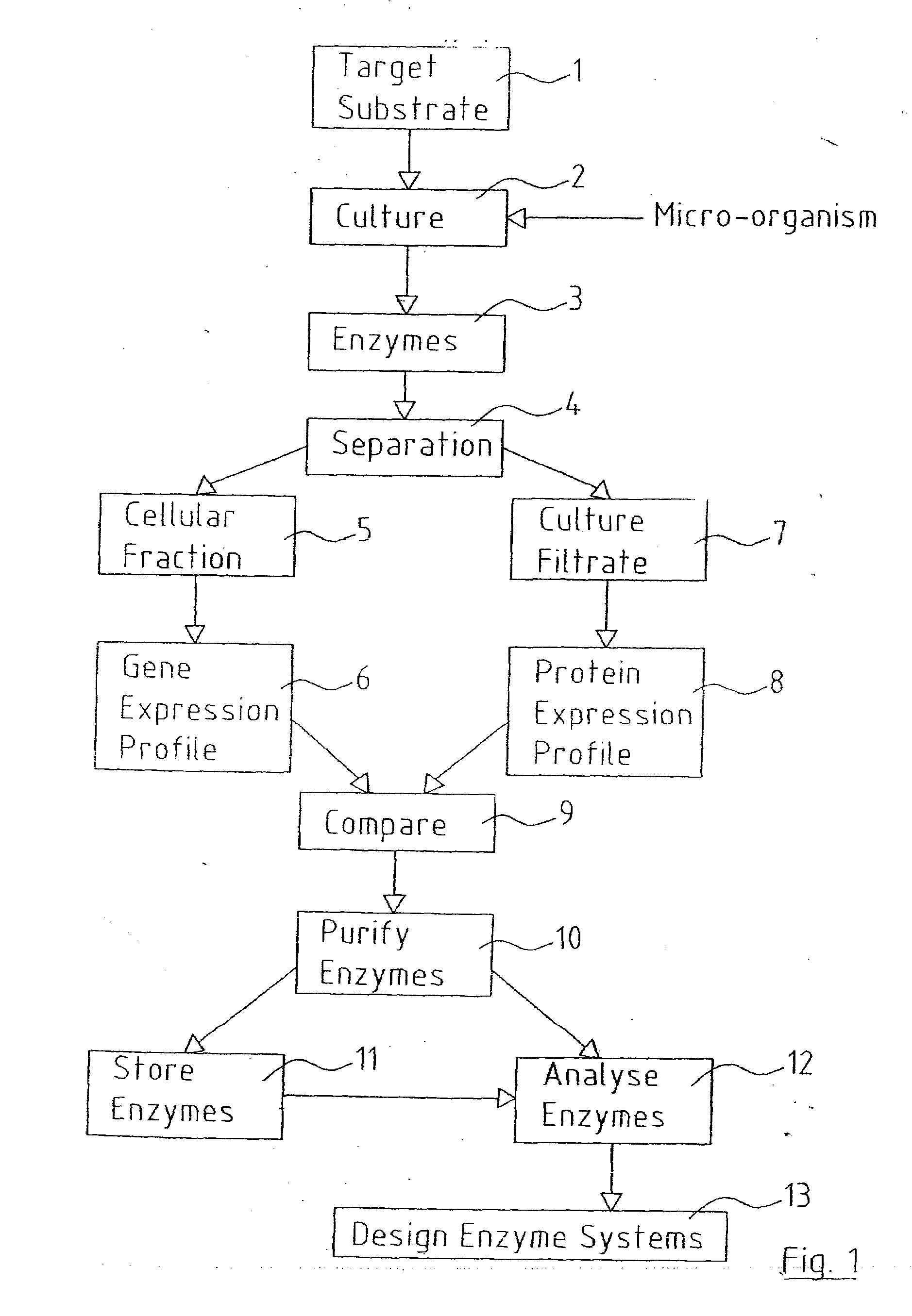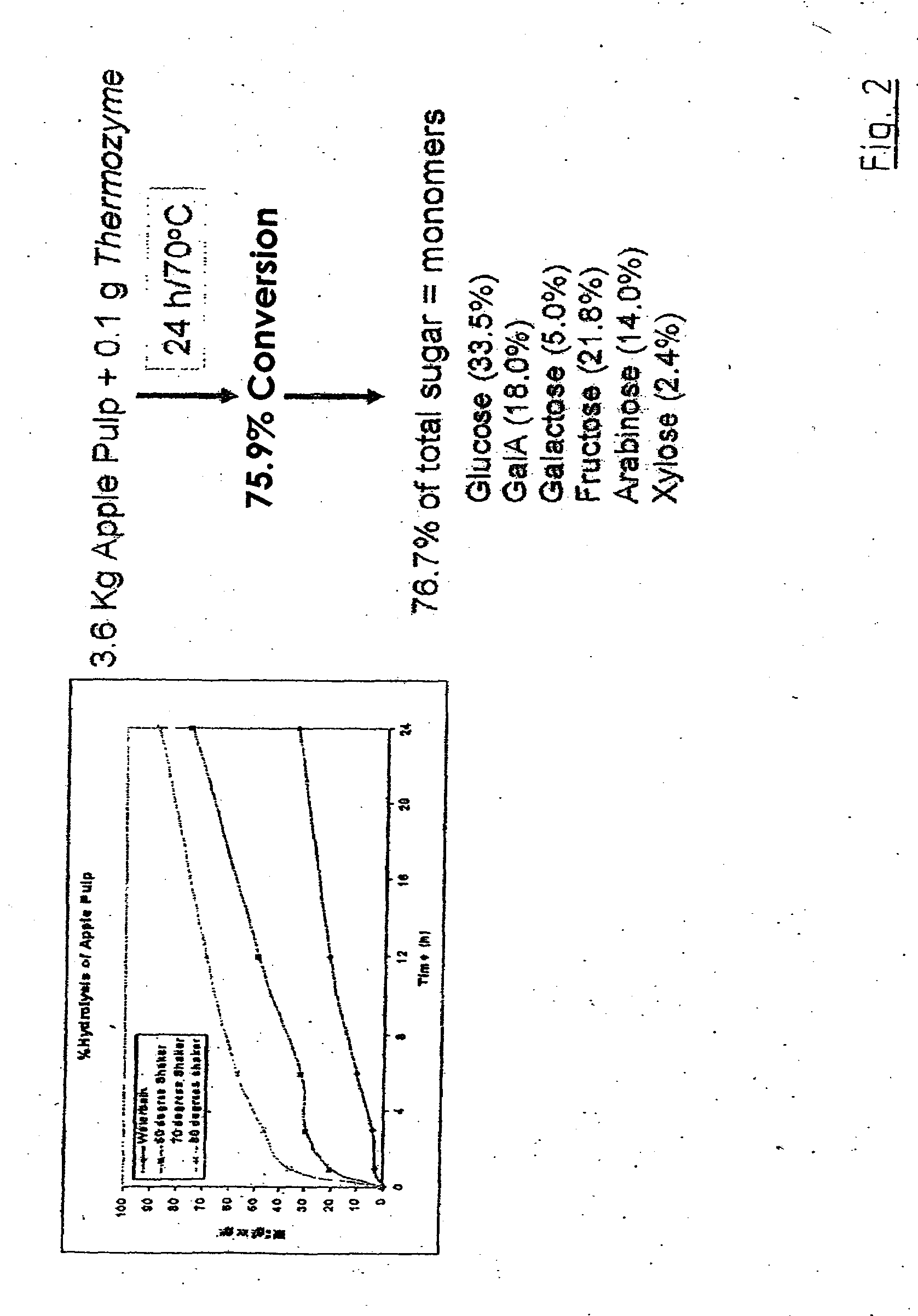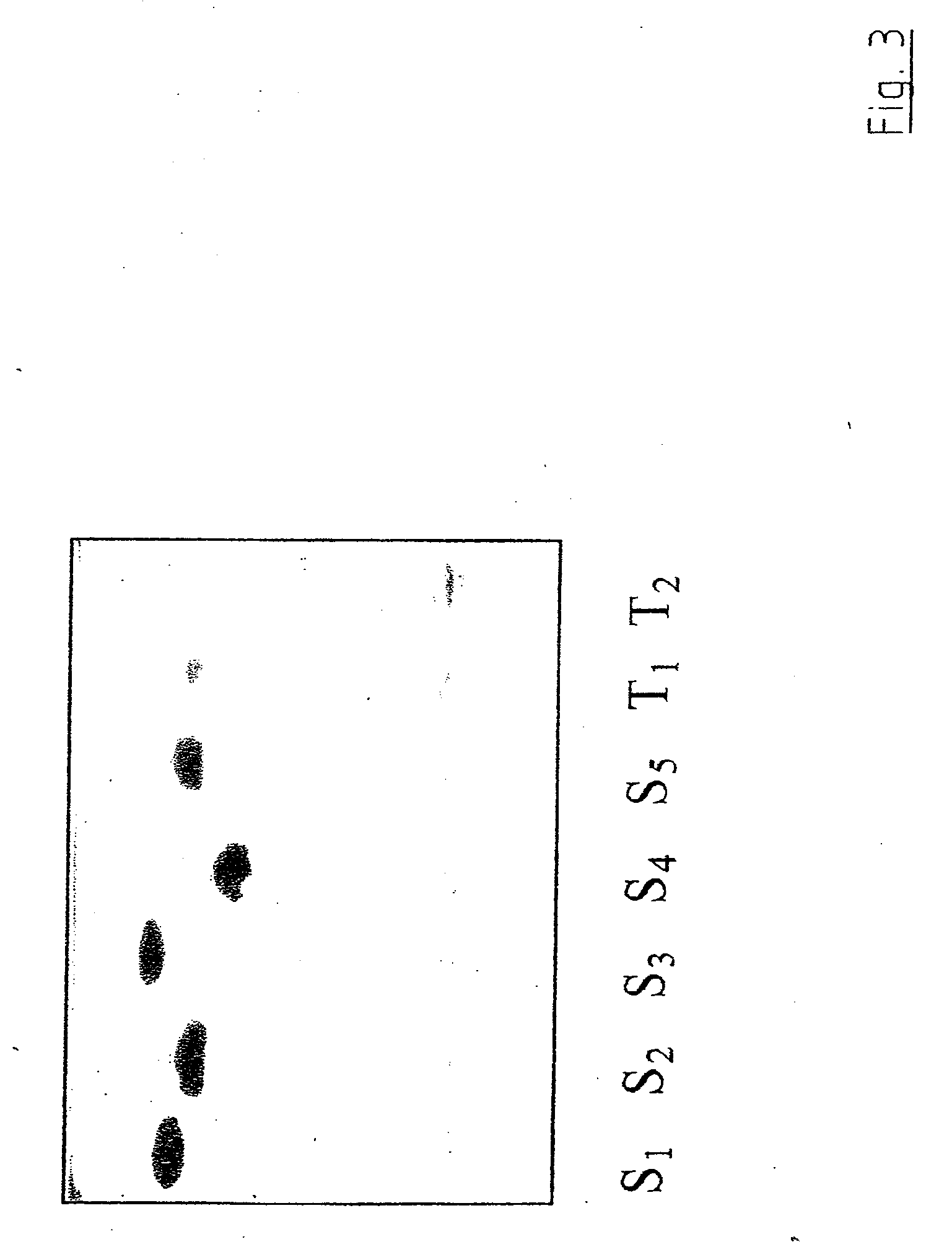Talaromyces emersonii enzyme systems
a technology of enzyme systems and talaromyces emersonii, which is applied in the field of strains of talaromyces emersonii and enzymes and enzyme systems, can solve the problems of time and cost saving, and the shelf life of enzymes purified from this strain has been shown to be longer, so as to increase the bioavailability of natural antioxidant biomolecules and increase the bioavailability of biomolecules
- Summary
- Abstract
- Description
- Claims
- Application Information
AI Technical Summary
Benefits of technology
Problems solved by technology
Method used
Image
Examples
example 1
T. emersonii IMI393751, Isolation
[0076]Freshly harvested (˜200 g) clean grass (lawn) cuttings and other mixed plant biomass were placed in a closed container to simulate a composting environment, and incubated in a constant temperature chamber, at 65° C., for approximately 2 h (combined-pasteurisation and equilibration of the substrate). Humidity / moisture content was maintained at ˜65-70% The container was fitted with a line providing a low pulse of moist, filtered air at intervals. After 2 h, a spore suspension (1×108 spores in 2% sterile water) of T. emersonii (laboratory stocks of a 12 year old isolate, originally from CBS814.70) was used to inoculate the centre region of the biomass. The temperature was maintained at 65° C. for 2 days, and increased in 2° C. intervals every 24 h thereafter until an air temperature of 70° C. was reached internally in the chamber. The culture was grown for a further 7 days before a sample of the inoculated ‘hot-spot’ or central region was removed ...
example 2
An Enzyme System from Talaromyces emersonii for Converting Hemicellulosic Materials
[0082]The complete hydrolysis of xylan requires the synergistic action of xylanases, β-xylosidase, α-glucuronidase, α-L-arabinofrranosidase and esterases. Table 1. gives an example of selected target substrates (including wastes / residues) and the percentage inducing carbon source used in this example. The percentage induction refers to the weight of carbon source per volume of medium (g / 100 mls).
TABLE 1Growth substrates / inducing carbon sourcesfor enzyme production by T. emersonii% InducingCarbon SourceAbbreviationcarbon sourceBeechwood xylanBEX1.0Birchwood xylanBWX1.0Oat spelt xylanOSX1.0Larchwood xylanLWX0.3Wheat arabinoxylanWAX1.0Spruce shavingsSS2.0-6.0Packing materialPK0.5-6.0Cereal strawsCS1.0-2.0Paper CupsPC2.0-6.0White Office paperWOP2.0-6.0Tea LeavesTL2.0-4.0Methyl xyloseMEX0.2XyloseXyl1Glucuronic acidGlcA1Solka flocSF2{circumflex over ( )}GlucoseGlc2{circumflex over ( )}{circumflex over ( )}...
example 3
System from Talaromyces emersonii for Converting Cereals, Beet Pulp, and Other Materials (Including Wastes) Rich in Arabinoxylans and Acetylated Hemicelluloses
[0083]Table 4 gives relative amounts of different enzyme activities in designed enzyme systems from Talaromyces emersonii IMI 39375 land two previously identified mutant strains designed for conversion of cereals, beet pulp, and other materials (including wastes) rich in arabinoxylans and acetylated hemicelluloses.
TABLE 4Enzyme activities of systems for conversion of materials rich in arabinooxylans and acetylated hemicelluloses(IMI 393751; 1:1 WB / BP(IMI 393751; Carob powder(mutant TC2; WB(mutant TC5; Tea leavesas inducer)as inducer)as inducer)as inducer)EnzymeEnzyme activityEnzyme activityEnzyme activityEnzyme activityPreparation / compositionprofile (%)profile (%)profile (%)profile (%)Xylanase20-30%15-25%35-50%12-20%Exoxylanase 5-10%2-5%10-15%2-8%β-Xylosidase0.5-2.0%0.2-1.5%0.5-1.5%0.1-1.0%α-Glucuronidase0.5-2.0%0.2-1.5%0.2-1....
PUM
 Login to View More
Login to View More Abstract
Description
Claims
Application Information
 Login to View More
Login to View More - R&D
- Intellectual Property
- Life Sciences
- Materials
- Tech Scout
- Unparalleled Data Quality
- Higher Quality Content
- 60% Fewer Hallucinations
Browse by: Latest US Patents, China's latest patents, Technical Efficacy Thesaurus, Application Domain, Technology Topic, Popular Technical Reports.
© 2025 PatSnap. All rights reserved.Legal|Privacy policy|Modern Slavery Act Transparency Statement|Sitemap|About US| Contact US: help@patsnap.com



